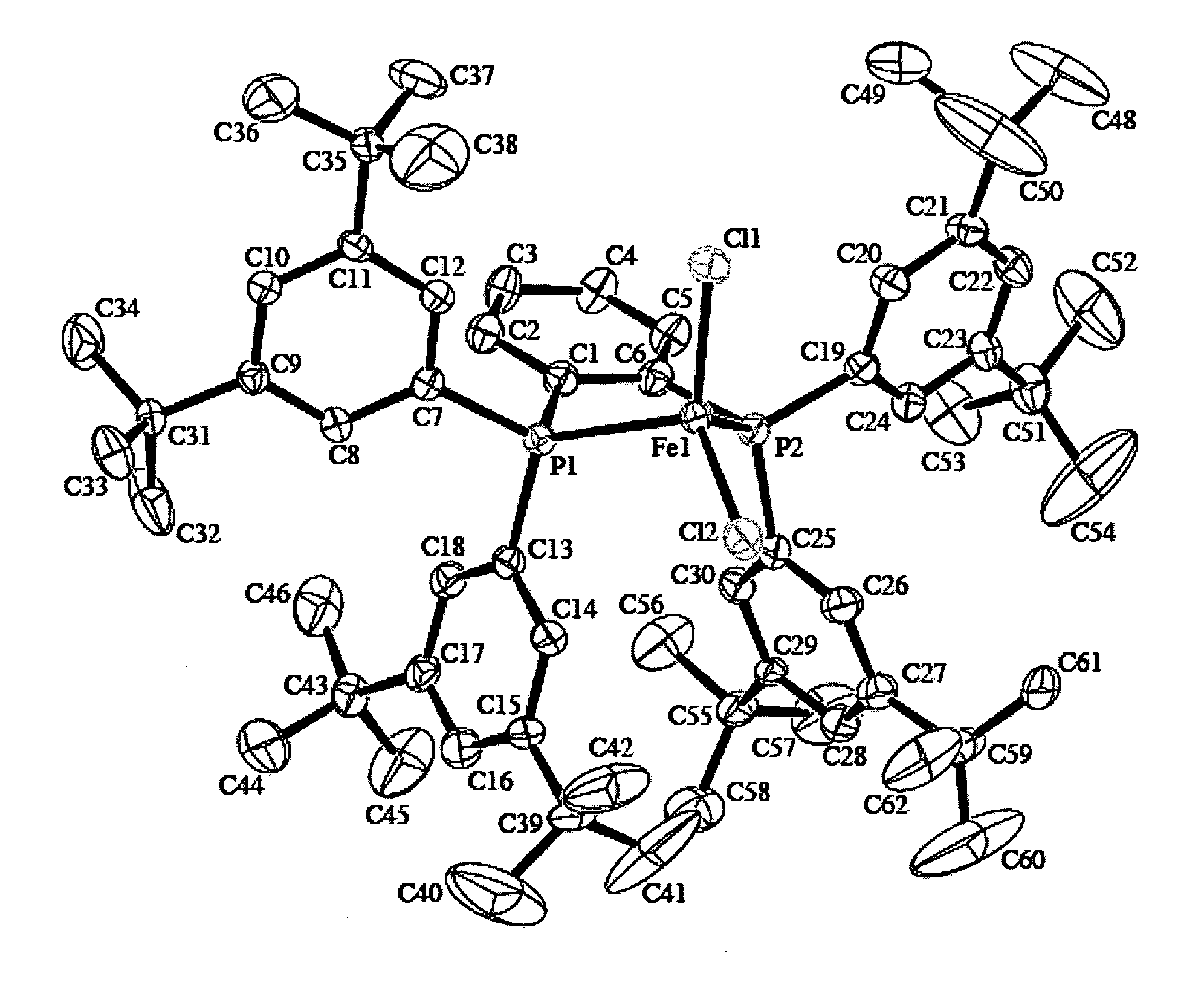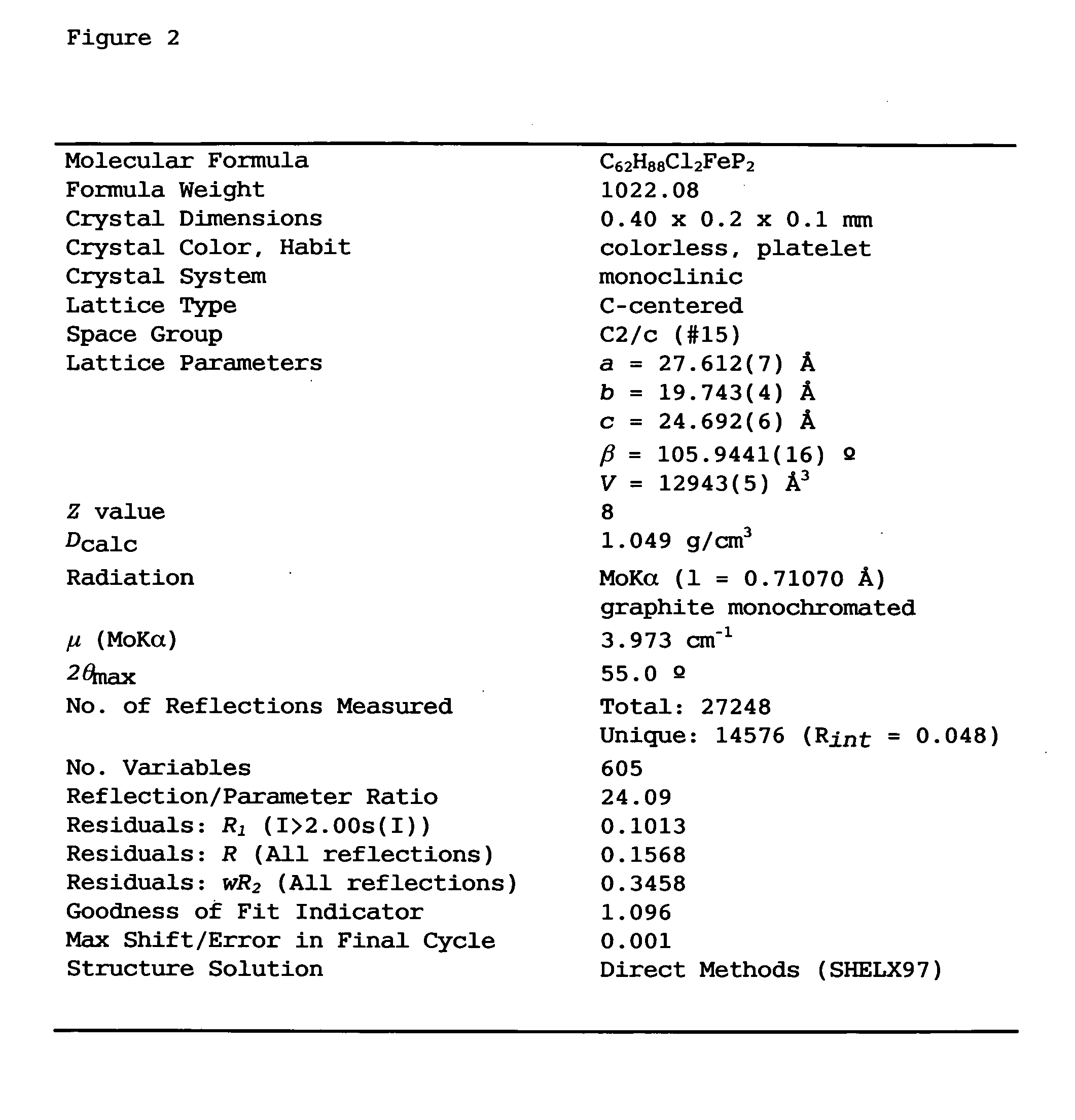Catalyst for cross-coupling reaction, and process for production of aromatic compound using the same
a cross-coupling reaction and catalyst technology, applied in the direction of organic compounds/hydrides/coordination complex catalysts, physical/chemical process catalysts, iron organic compounds, etc., can solve the problems of insufficient method for producing a variety of functional compounds, cost and reaction efficiency, etc., to achieve efficient and efficient production, high yield, and efficient operation
- Summary
- Abstract
- Description
- Claims
- Application Information
AI Technical Summary
Benefits of technology
Problems solved by technology
Method used
Image
Examples
first embodiment
1. First Embodiment
Cross-Coupling Reactions Using Mg Reagent
[0052]The present invention is directed to a process as shown by the following scheme for producing an aromatic compound represented by Formula (1). The process comprises reacting a compound represented by Formula (2) with a magnesium reagent represented by Formula (3), in the presence of a catalyst for cross-coupling reactions comprising an iron compound (or iron catalyst) and a bisphosphine compound represented by Formula (4).
[0053]wherein R represents an optionally substituted hydrocarbon group, and may have a group represented by —O— between a carbon-carbon bond of the hydrocarbon group; X represents a halogen atom; Ar″ represents an optionally substituted aryl or heteroaryl group; Y represents a halogen atom; Q represents a divalent group derived from an optionally substituted aromatic or heteroaromatic ring by removing two hydrogen (H) atoms on adjacent carbon atoms; and each Ar independently represents an optionally ...
second embodiment
2. Second Embodiment
Cross-Coupling Reactions Using Zn, B, or Al Reagent
[0130]The present invention is directed to a process as shown by the following scheme for producing an aromatic compound represented by Formula (8). The process comprises reacting a compound represented by Formula (2) with an organometallic reagent having a bond represented by Formula (9), in the presence of a catalyst for cross-coupling reactions comprising an iron compound and a bisphosphine compound represented by Formula (4a).
[0131]wherein Ar″ is an optionally substituted aryl or heteroaryl group; Mtl represents zinc (Zn), boron (B), or aluminum (Al); and R, X, and each Ar1 are as defined above.
[0132]In the compounds represented by Formulae (2) and (8), R represents an optionally substituted hydrocarbon group, and may have a group represented by —O— between a carbon-carbon bond of the hydrocarbon group. X represents a halogen atom. That is, R and X are synonymous with the R and X described in the “1. First Em...
production example 1
1,2-Bis(bis(4-fluorophenyl)phosphino)benzene
[0198]A THF solution (26.6 mL, 1.03 M, 27.40 mmol) of p-fluorophenylmagnesium bromide was added to a mixture of 1,2-bis(dichlorophosphino)benzene (0.96 g, 3.43 mmol) and THF (20 mL) in an argon atmosphere at −78° C. After warming to room temperature, the mixture was allowed to react overnight at 60° C. The reaction mixture was cooled to ambient temperature, and the solvent was removed under reduced pressure; subsequently, CH2Cl2 (30 mL) was added. 1N aqueous solution of hydrochloric acid (20 mL) was added to the reaction mixture, and the aqueous layer was extracted three times with CH2Cl2. The moisture contained in the combined organic extract was removed with magnesium sulfate, and the extract was filtered. After removing the solvent under reduced pressure, the resulting yellow oily substance was triturated with methanol to give a white powder, and the white powder was washed two times with methanol, giving the title compound as a white p...
PUM
 Login to View More
Login to View More Abstract
Description
Claims
Application Information
 Login to View More
Login to View More - R&D
- Intellectual Property
- Life Sciences
- Materials
- Tech Scout
- Unparalleled Data Quality
- Higher Quality Content
- 60% Fewer Hallucinations
Browse by: Latest US Patents, China's latest patents, Technical Efficacy Thesaurus, Application Domain, Technology Topic, Popular Technical Reports.
© 2025 PatSnap. All rights reserved.Legal|Privacy policy|Modern Slavery Act Transparency Statement|Sitemap|About US| Contact US: help@patsnap.com



